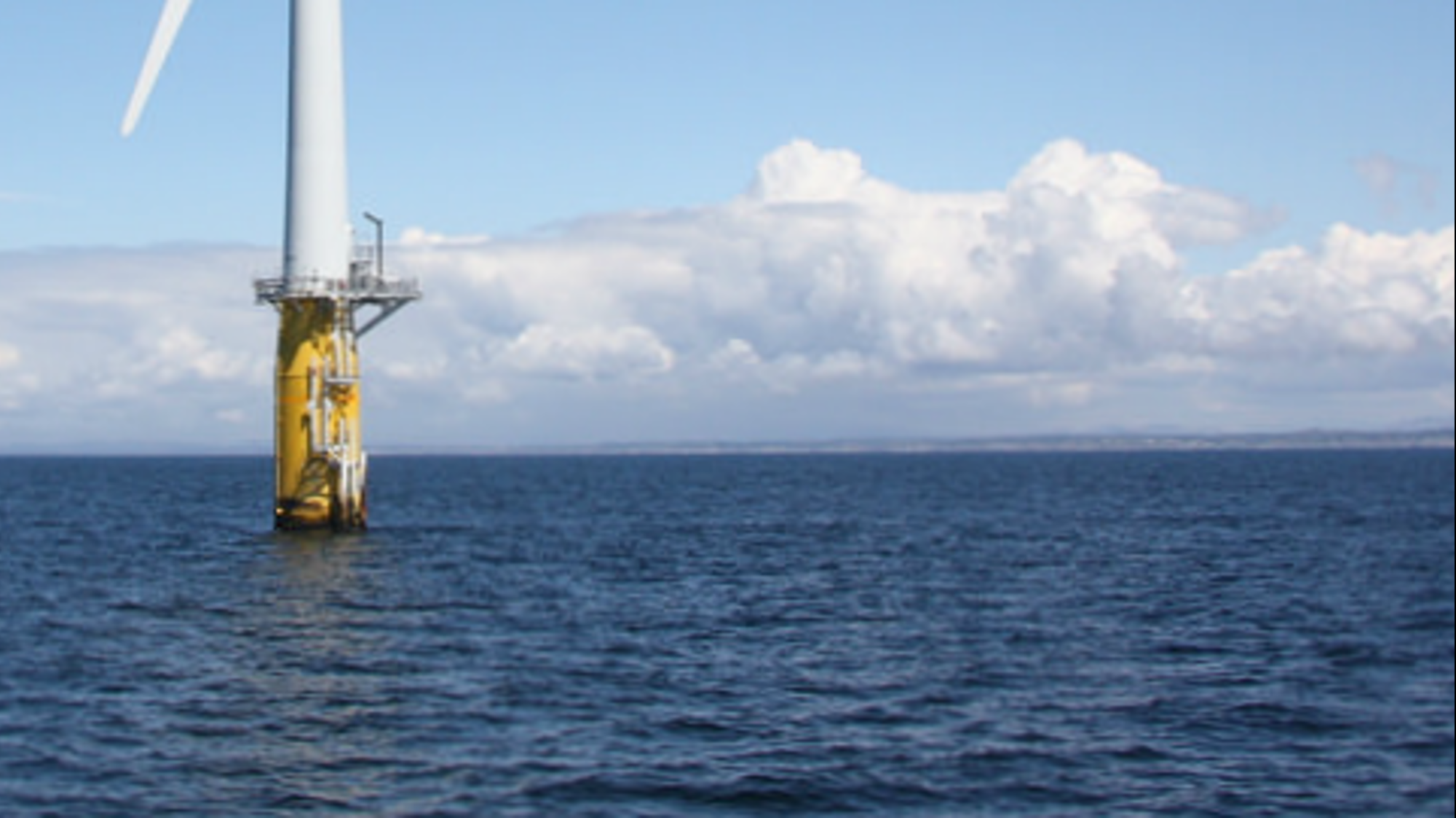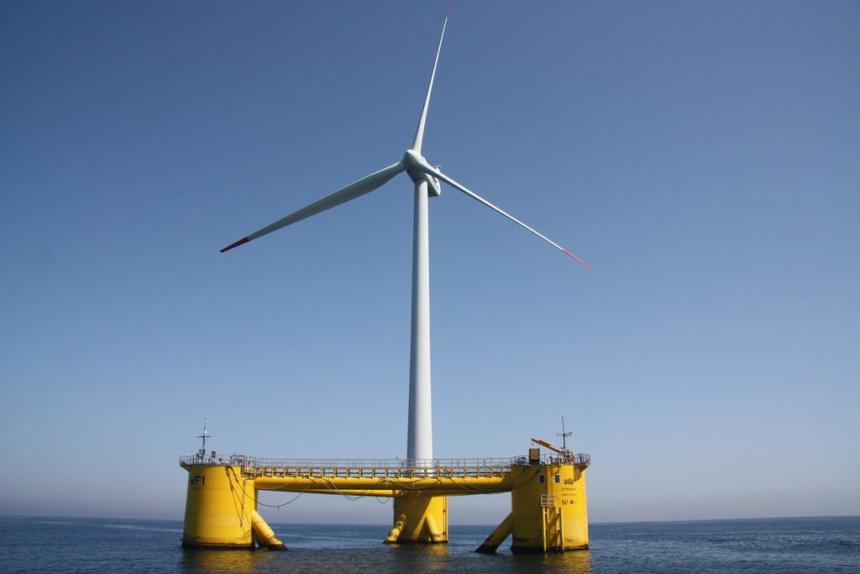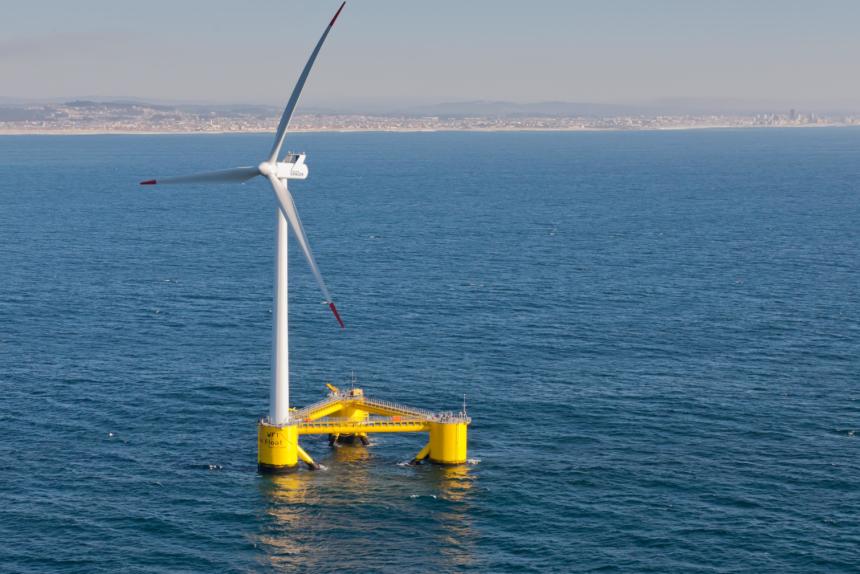
Blog post
Floating offshore wind (part 2): Financing FOW
Energy Blog, 21 September 2017
In a second post on floating offshore wind, Martin Guzzetti addresses the financeability of the sector.
As floating offshore wind (FOW) projects are moving from the prototype phase to commercial endeavours, the question of how they will be financed is becoming more acute. Utilities and technology providers may have been willing to bear the cost of demonstration projects on their balance sheets, but will want third-party funding for their next projects, both to reduce the risk they bear and to get external validation of the technology.
Given that this is offshore wind, it stands to reason that lenders and investors will work from what they know (offshore wind using fixed-bottom foundations), and try to understand how different FOW is from a risk perspective. The good news is that fixed-bottom offshore wind is something that both lenders and investors are quite comfortable with and the risk analysis with respect to items such as turbine technology, regulatory context and price regimes will be based on what has already been done in the fixed-bottom sector and will not, for well-structured projects, raise any new issues. The focus will naturally then move to the foundation technology, raising some questions:
- As an obvious starter: does the technology work? i.e. do these foundations provide a stable enough base for wind turbines in all sea conditions, and do they not create unexpected stresses on the turbine from possible movements? Do engineers understand the cross-effects of waves and wind-driven efforts on the turbine structure? Specific due diligence and complete transparency will be required on items new to the financial community, like the interaction between the operation of the turbine and the motion of the substructure, the dynamicity of the electrical cabling (export and inter-array), the dis/connectivity of both the electrical cables and the mooring lines (for maintenance purposes), the performing of the ballast system (active or passive) and the adoption of a floating offshore substation (first of its kind).
- A second question would focus on cost and feasibility of construction. Can people actually build these huge structures in the numbers required and the timetables contemplated? Is the onshore infrastructure available to do that?
Next will be questions about O&M strategy. How do you do heavy maintenance on turbines in such deep waters? Is it doable, and cost-effective, to bring turbines back to shore to do repairs? And what about maintenance of the foundations, or of the mooring system and the electric cables? - If the technical answers are satisfactory, the questions will then move to the contractual responsibility of parties – can the responsible party be identified if problems arise or will there be a risk of disputes between the turbine supplier and the foundation provider? Are the foundation suppliers strong enough, financially, to provide the necessary guarantees backing their technology?

Windfloat floating offshore platform in Povoa de Varzim, Portugal
Fixed-bottom offshore wind forced financiers to deal with multi-contract construction setups, and to understand the corresponding interface risks. They have done so, but are always very careful about it. Here, with FOW, we are again in a multi-contract situation, but with a new set of interfaces and risks that financiers will need to get comfortable with. In addition to turbine manufacturers and marine civil contractors, there will be a new, critical party involved, in the form of a naval shipyard and/or a floating technology provider.
In particular, the design of the floating foundation must ensure that the wind turbine generator remains within its operational envelope; thus, full cooperation from the turbine supplier is needed to delineate the integrated design requirements and to confirm the acceptability of the substructure’s performance – not only must the responsibility of each party be clearly defined, but the financiers will also want to be comfortable that the relevant parameters of the operational envelope can be measured in a way that is acceptable and binding for all parties if problems arise, and that the consequences (and potential cost) of moving outside the agreed parameters are understood (whether it is ‘just’ lost production or it precludes the need for repairs to any part of the equipment).
From a contractual point of view, the design certification by a reputable classification body is an obvious must-have, but that will not eliminate the need for a detailed interface matrix for the operational phase. The availability guarantees (for both the turbine and the substructure), together with the power curve warranty, will be the ‘hot items’ to negotiate, with strong commitments of the FOW technology provider a requirement.
Conversely, the risk allocation during construction is likely to be simpler than with fixed-bottom foundations, as most of the construction work can be done onshore, with very limited weather risk and a more straightforward installation process (with the structures towed to their ultimate location rather than assembled there).
In any case, the well-known principles of contractual strategy which have facilitated the project financing of fixed-bottom projects can be applied to FOW as well, such as:
- distributing the project scope of work in well-defined contract lots, priced on the basis of fixed lump sum amounts;
- the inclusion of delay damages and delay schedule rates in the contracts, so as to guard both the developer and the contractor against possible underperformances; and
- the implementation of absolute liability caps for the contractors high enough to compensate all losses resulting from the employer being sued.

Windfloat 1 floating offshore wind foundation, with Vestas V-80 2MW turbine, installed in 2011
The turbine availability track record of the chosen FOW technology and the strength of the industrial counterparties will play a major difference in the eyes of the investors and lenders: the most advanced FOW technologies, i.e. those with large-scale demonstrators installed and with a satisfactory operating track record, are more likely to be financed on a non-recourse basis. Ample contingency budgets, for both the construction and maintenance phases, together with a comprehensive insurance package, will be standard but essential components of the contractual and financing package required.
An aspect which is partly different from fixed-bottom is that FOW will take place in countries with a very different political context than fixed-bottom projects. Support for renewables in places like Taiwan, the US or Spain is either untested or has been subject to serious vagaries and projects have seen serious obstacles, including challenges to permits or, as in Spain, retroactive changes to price regimes. Financiers will want to be comfortable with the specific regimes put in place for FOW, and be reassured that such regimes are sustainable. This means that the tariffs must be reasonable (not too far away from tariffs for fixed-bottom offshore and other renewable energy technologies) and that there must be a good enough strategic rationale to develop the technology in the country, with demonstrated public support for that. Private sector financiers will likely want to see multilateral financing institutions (such as the EIB, export credit agencies or public development banks) involved in the early projects to provide “political cover” to a certain extent.
If all of this can be resolved via technical and legal due diligence, it is likely that the commercial terms of the first FOW deals will be guided by the traditional offshore wind market precedents, but end up, at least for the initial deals, being rather more conservative. For instance, one can expect lower leverage (with 50:50 debt:equity ratios rather than the 70:30 common for fixed-bottom, for example) and higher debt pricing (with probably a 50-100 bps premium on margins above traditional offshore).
In any case, in this period prior to the first commercial deal, project developers and technical advisors must keep making the effort and taking the time to educate the financial community, so that investors and lenders understand the risks which lie behind the FOW technology and obtain comfort that such risks can be managed.
Ultimately, we believe that funding could be available to the forthcoming round of early commercial FOW projects, but subject to strict conditions and realistic expectations. This means that the cost base of these early projects, expressed as the average long term cost of electricity, is not going to be the most competitive, as funding will not be on the most aggressive terms. Such early deals will nevertheless be vital for the industry as it will allow the track record for commercially-proven FOW to start, which will give comfort that subsequent deals can be done with more optimistic assumptions and thus more favourable terms, i.e. cheaper.
Martin Guzzetti
Banner image: Hywind floating offshore wind foundation, with Siemens 2.3 MW in North Sea, Norway
